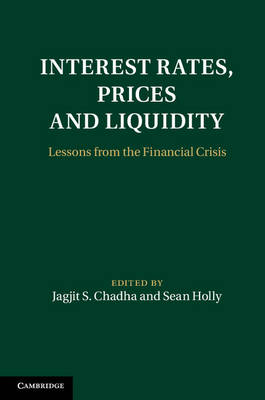
Interest Rates, Prices and Liquidity
Cambridge University Press (Verlag)
978-1-107-01473-2 (ISBN)
Many of the assumptions that underpin mainstream macroeconomic models have been challenged as a result of the traumatic events of the recent financial crisis. Thus, until recently, it was widely agreed that although the stock of money had a role to play, in practice it could be ignored as long as we used short-term nominal interest rates as the instrument of policy because money and other credit markets would clear at the given policy rate. However, very early on in the financial crisis interest rates effectively hit zero percent and so central banks had to resort to a wholly new set of largely untested instruments to restore order, including quantitative easing and the purchase of toxic financial assets. This book brings together contributions from economists working in academia, financial markets and central banks to assess the effectiveness of these policy instruments and explore what lessons have so far been learned.
Jagjit S. Chadha is Professor of Economics, University of Kent. Sean Holly is Professional Fellow at Fitzwilliam College and Director of Research at the Faculty of Economics, University of Cambridge.
1. New instruments of monetary policy Jagjit S. Chadha and Sean Holly; 2. Liquidity and monetary policy Douglas Gale; 3. Interest rate policies and the stability of banking systems Hans Gersbach and Jan Wenzelberger; 4. Handling liquidity shocks: QE and Tobin's q Marcus Miller and John Driffill; 5. Asset purchase policies and portfolio effects: a DSGE analysis Richard Harrison; 6. Financial intermediaries in an estimated DSGE model for the UK Stefania Villa and Jing Yang; 7. Unconventional monetary policy, central bank balance sheets and long term forward rates Sharon Kozicki, Eric Santor and Lena Suchanek; 8. Non-standard monetary policy measures and monetary developments Domenico Giannone, Michele Lenza, Huw Pill and Lucrezia Reichlin; 9. Quantitative easing: one year on Spencer Dale; 10. What saved the banks: unconventional monetary or fiscal policy? Mike Wickens; 11. Non-conventional monetary policies: three views from the DSGE literature Evren Caglar, Jack Meaning, Alex Waters, James Warren and Jagjit Chadha.
| Erscheint lt. Verlag | 27.10.2011 |
|---|---|
| Reihe/Serie | Macroeconomic Policy Making |
| Zusatzinfo | 20 Tables, black and white; 55 Line drawings, unspecified |
| Verlagsort | Cambridge |
| Sprache | englisch |
| Maße | 157 x 235 mm |
| Gewicht | 590 g |
| Themenwelt | Wirtschaft ► Betriebswirtschaft / Management ► Finanzierung |
| Betriebswirtschaft / Management ► Spezielle Betriebswirtschaftslehre ► Bankbetriebslehre | |
| Wirtschaft ► Volkswirtschaftslehre ► Finanzwissenschaft | |
| Wirtschaft ► Volkswirtschaftslehre ► Makroökonomie | |
| ISBN-10 | 1-107-01473-5 / 1107014735 |
| ISBN-13 | 978-1-107-01473-2 / 9781107014732 |
| Zustand | Neuware |
| Informationen gemäß Produktsicherheitsverordnung (GPSR) | |
| Haben Sie eine Frage zum Produkt? |
aus dem Bereich


